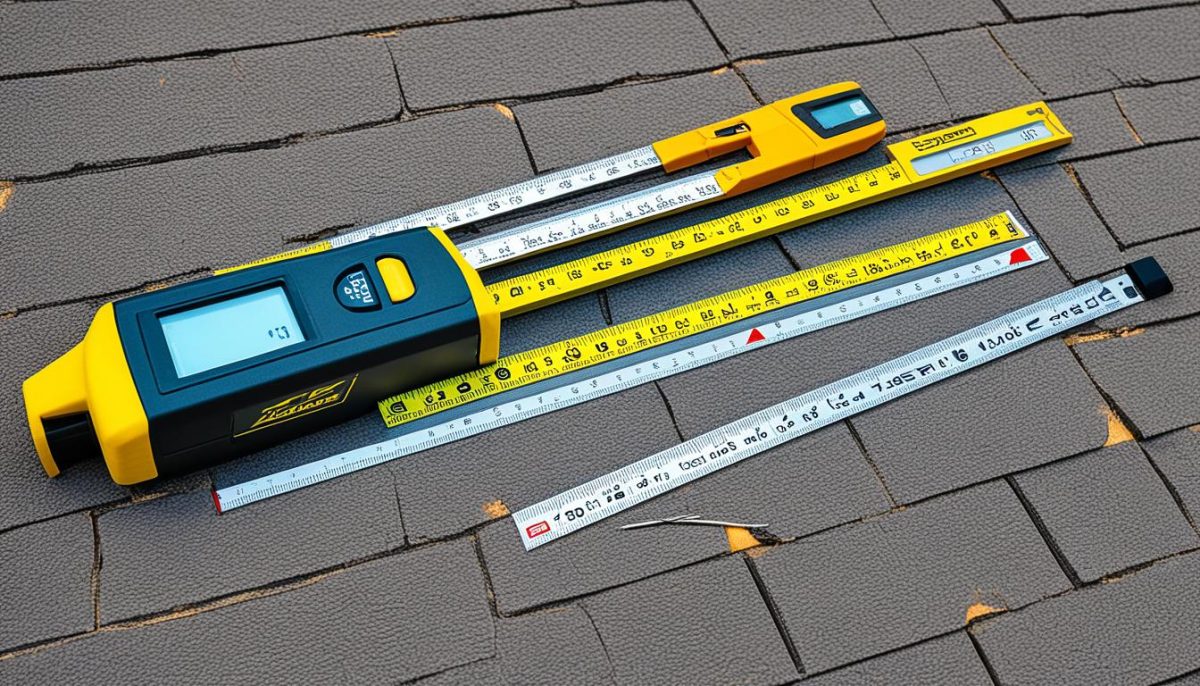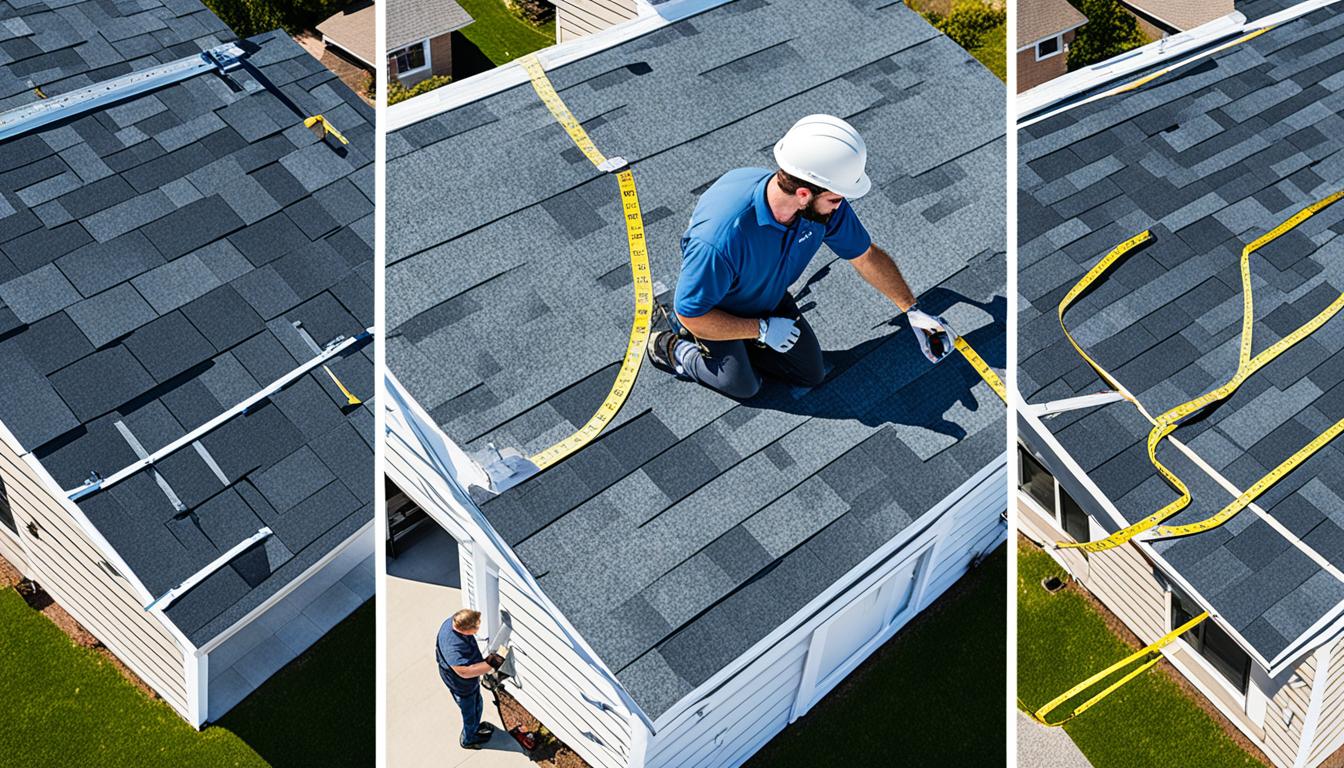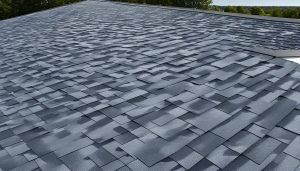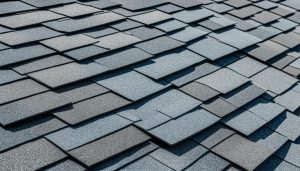Welcome to our comprehensive guide on measuring your roof for shingles. Accurate measurements are crucial for ensuring a perfect fit and avoiding costly mistakes. In this section, we will walk you through the step-by-step process, providing you with all the information you need to achieve precise roof measurements.
Whether you are a DIY enthusiast or a professional contractor, knowing the correct techniques for measuring your roof will save you time, money, and effort in the long run. Let’s dive in and explore the world of roof measurement and how it relates to shingle installation.
Before we begin, it’s important to understand that accurate measurements are the foundation for a successful roofing project. By following our instructions, you will be equipped with the knowledge and confidence to measure your roof with precision. So, let’s get started on this exciting journey of measuring shingles and achieving accurate results.
Understanding Shingle Roof Measurements
Before you begin measuring your roof for shingles, it’s important to familiarize yourself with key terms and concepts related to roof pitch, roof area, and square footage. Having a clear understanding of these measurements will contribute to accurate and successful roof measurements.
Determining Roof Pitch
The roof pitch refers to the steepness or slope of your roof. It’s an essential measurement to determine the overall dimensions of your roof. To calculate the roof pitch, you can use a pitch gauge or a level and tape measure. Measure the vertical rise and horizontal run, and then refer to a pitch chart or utilize an online roof pitch calculator to determine the exact pitch value.
Calculating Roof Area
Once you have determined the roof pitch, you can proceed to calculate the roof area. Roof area refers to the total coverage or surface area of your roof. To calculate the roof area, you can break down your roof into different sections such as rectangles, triangles, or trapezoids, depending on its shape. Measure the dimensions of each section accurately and calculate the area using the appropriate formulas. Sum up the areas of all sections to find the total roof area.
Converting to Square Footage
To provide a standardized unit of measurement, the roof area is commonly converted to square footage. Square footage is a widely used measurement to determine various material requirements, including shingle quantities. To convert the roof area to square footage, simply multiply the area by a conversion factor. For example, if the roof area is measured in square feet, there is no need for conversion.
Understanding these key measurements will empower you to confidently measure your roof for shingles, ensuring accurate results.
| Term | Description |
|---|---|
| Roof Pitch | The steepness or slope of the roof |
| Roof Area | The total coverage or surface area of the roof |
| Square Footage | The standardized unit of measurement for the roof area |
Measuring the Roof
In order to accurately measure your roof for shingles, it is important to have the right tools on hand. Whether you choose to measure from the ground or use a ladder, having the proper equipment will ensure precise measurements.
Measuring Tools
Here are some essential measuring tools that you may find helpful:
- Tape measure: A reliable tape measure is crucial for accurately measuring the dimensions of your roof.
- Laser measurer: Using a laser measurer can provide fast and precise measurements, especially for larger roofs.
- Roofing square: This L-shaped tool helps determine angles and make precise cuts.
- Slope gauge: A slope gauge is useful for measuring the pitch of your roof.
Having these measuring tools readily available will make the measuring process much easier and more efficient.
Measuring from the Ground
If you choose to measure your roof from the ground, there are a few methods you can use to ensure accuracy:
- Use a measuring tape: Measure the width and length of your roof from the ground and multiply these dimensions to calculate the total square footage.
- Use a drone: Drones equipped with cameras can provide aerial views that allow you to measure the roof from different angles.
When measuring from the ground, it is essential to consider any roof features such as dormers, chimneys, or valleys. These areas may require additional measurements and calculations to accurately estimate the necessary materials.

“Measuring your roof from the ground can be a convenient option, especially for smaller roofs. However, it’s important to remember to account for any roof features that may affect the measurements.”
Measuring from the Ladder
If your roof is larger or has more complex features, measuring from a ladder may be necessary. Here are a few tips for measuring your roof from a ladder:
- Ensure ladder safety: Make sure the ladder is secure and stable before climbing up.
- Take accurate measurements: Use your measuring tools to measure the roof dimensions while on the ladder.
- Be cautious of slopes: Pay attention to the slope of your roof and adjust your measurements accordingly.
When measuring from a ladder, it is crucial to prioritize your safety at all times. If you are uncomfortable or inexperienced with heights, it is best to seek professional assistance for accurate measurements.
Calculating Shingle Requirements
Now that you have accurately measured your roof, it’s time to calculate the number of shingle bundles you’ll need for your roofing project. This step is crucial to ensure you have enough shingles without any wastage or shortage.
Firstly, consider the waste factor. It’s important to factor in the waste factor during the calculation. The waste factor accounts for any cutting, trimming, and installation errors that may occur during the roofing process. A waste factor of 5-10% is a common industry standard, but the specific waste factor can vary depending on the complexity of your roof and the experience level.
Next, take into account the shingle type and style you plan to use. Different shingle types and styles come in varying bundle sizes. For example, asphalt shingles typically come in bundles of 3-tab or architectural shingles. Each shingle bundle covers a predetermined area. By knowing the square footage coverage of each bundle, you can accurately determine the number of bundles required based on your roof area.
When ordering shingles, it’s always recommended to round up your calculations to the nearest whole number of shingle bundles. This ensures you have enough for the entire roof, accounting for any additional waste or unexpected repairs that may arise during the installation process.




